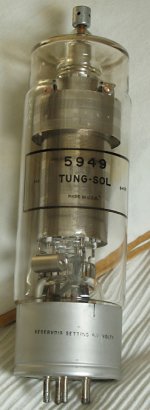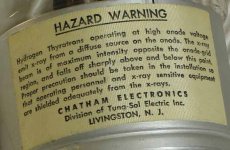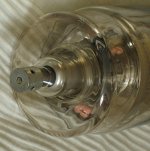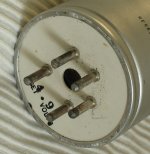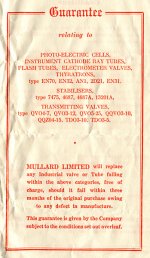It is a switch.
The hydrogen gas allows ionization to occur easier.
It is non linear.
It is used for things like pulsed radar. Also, as a crowbar, for cases when relays cannot open fast enough, this is triggered to shunt the voltage.
It remains latched till the current goes below a holding current.
It's like an SCR.
It has x-ray warnings because the voltage it can handle is sufficient that the electrons cause emission when they hit the anode..
Cheers, John
The hydrogen gas allows ionization to occur easier.
It is non linear.
It is used for things like pulsed radar. Also, as a crowbar, for cases when relays cannot open fast enough, this is triggered to shunt the voltage.
It remains latched till the current goes below a holding current.
It's like an SCR.
It has x-ray warnings because the voltage it can handle is sufficient that the electrons cause emission when they hit the anode..
Cheers, John
Yes, it seems so. Thanks. 25 kV, 500 A, X-rays, heavy stuff.rdf said:
It's just a big thyratron, the tube version of an SCR, these are used for high-power switching. I have some similar ones for sale on my website, from medical linear accelerators.
Take care,
Doug
Take care,
Doug
lndm said:There go the dreams for a 5000W SET amp
Well, get it to fire fast enough for class-D

rdf said:I still have no idea what it does. 🙂
Think of it as a programmable unijunction transistor on steroids.
Well, get it to fire fast enough for class-D
That is not a problem!, hydrogen thyratrons have extremely fast turn on and can switch very high currents, they are in most cases faster than solid state alternatives, this one can switch currents of up to 500A at a rate of 2500A/us.
The problem in building a class D amp with these is that they turn off slowly as the plasma need to break down.
Regards Hans
Wasn't the thyratron one of the key components used in the detonators of the first Nuke?
Something about speed?
Something about speed?
At work we have a product with a PUT!Miles Prower said:
Think of it as a programmable unijunction transistor on steroids.
 We use it as a comparator with zero power consumption. The design is from the stone age and creates a delay for a remanens relay. A small and well functioning solution. No need for batteries or big caps.
We use it as a comparator with zero power consumption. The design is from the stone age and creates a delay for a remanens relay. A small and well functioning solution. No need for batteries or big caps.Wasn't the thyratron one of the key components used in the detonators of the first Nuke?
I'm having an awful hard time looking up when EG&G came up with the Krytron, best Im getting is late 40s.
Hydrogen/Deuterium Thryatron? Dont know what they had then, but some can achieve commutation times <20ns.
- Status
- Not open for further replies.
- Home
- Amplifiers
- Tubes / Valves
- Big tube - what is it?
